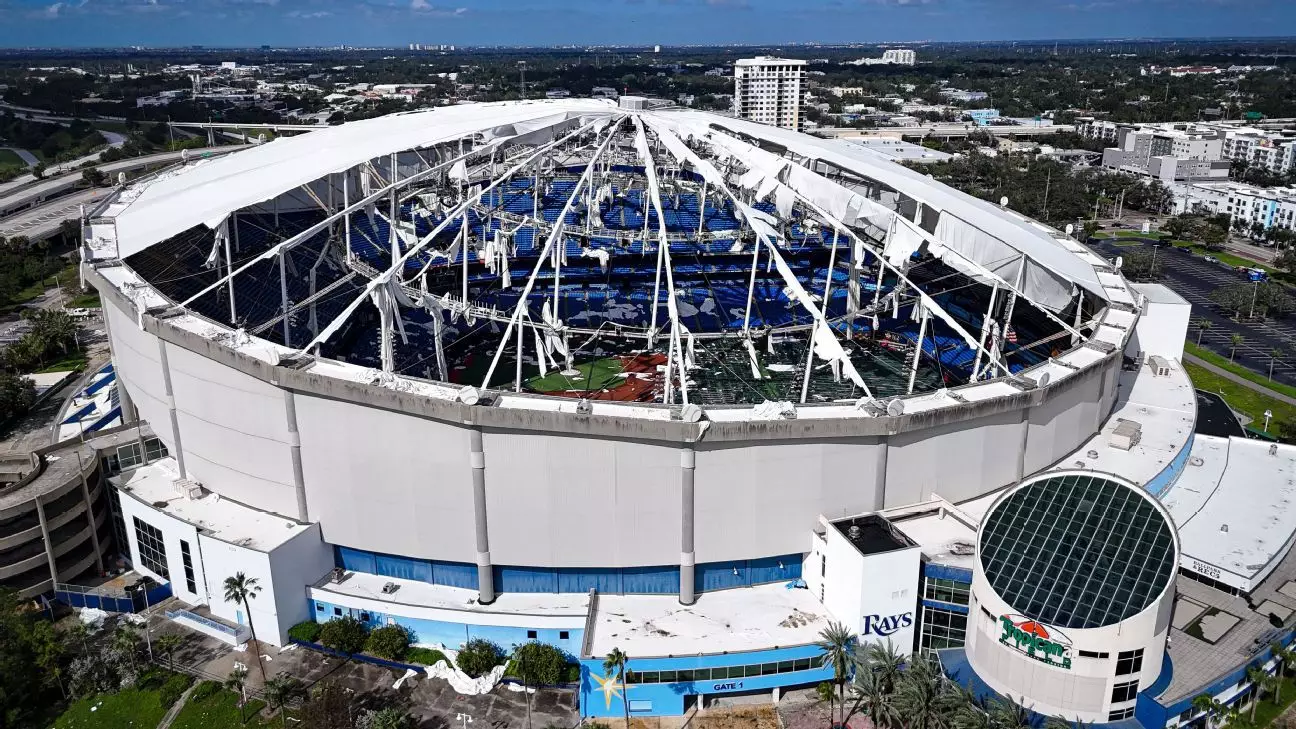The Tampa Bay Rays have made a definitive move to support a $55.7 million plan for the renovation of Tropicana Field, which has been severely damaged by Hurricane Milton. This recent announcement demonstrates a newfound commitment to not only restore the beloved ballpark but also to enhance the infrastructure surrounding the team as they gear up for the 2026 season opener. The renovation plan emerges amid logistical challenges, as the Rays plan to temporarily relocate their home games to Steinbrenner Field, the New York Yankees’ spring training facility, while repair work is underway.
Following the devastation that Hurricane Milton caused when it struck on October 9, the Rays found themselves at a crossroads, debating whether to push for a city buyout of their contractual obligation to repair the stadium. However, in an email from co-president Matt Silverman to St. Petersburg’s chief administrator, the team clarified its position: they are in favor of promptly restoring Tropicana Field in alignment with the existing use agreement. This indicates an effort to provide transparency and alleviate any concerns that city officials or fans may have had about the team’s intentions going forward.
Hurricanes have long showcased the vulnerability of coastal cities, and the situation faced by St. Petersburg is no different. The repair of Tropicana Field comes at a crucial time when residents and business owners are still grappling with the aftermath of natural disasters. Many believe that the proposed $55.7 million renovation may put further strain on local resources, especially in light of the devastation caused by not only Hurricane Milton but also by Hurricane Helene shortly before that. With this backdrop of misfortune, St. Petersburg Mayor Ken Welch has proposed that insurance proceeds and FEMA assistance should mitigate the financial burden on the city.
Silverman’s assurances that Major League Baseball will oversee the renovation process signal a shift towards accountability. Baseball’s involvement is vital; it emphasizes the importance of meeting deadlines and maintaining compliance with safety and structural standards. The need for a timely and efficient repair process cannot be overstated, as Silverman himself pointedly expressed that any delay in the project could lead to significant logistical and financial difficulties for the team.
Looking beyond the immediate repairs, the Rays are eyeing an extensive redevelopment plan in the downtown area that extends far beyond mere baseball. The new ballpark is a key component of a potential $6.5 billion project intended to transform the Historic Gas Plant District into a vibrant hub that includes affordable housing, a Black history museum, dining options, and commercial spaces. This ambitious vision stands as a tribute to a community that has faced historical displacement, aiming to reintegrate and revitalize the area that once flourished.
This new development represents not just a physical space for the Rays to play but also an opportunity to create a living tribute to the rich cultural history of the district. Silverman’s comments about the future endeavors of the Rays resonate a commitment to corporate responsibility and community engagement, essential for fostering goodwill between the team and the local population.
As the Rays navigate through this transitional phase—first by reconstructing Tropicana Field and then ushering in a new era with their proposed ballpark—the pressures and expectations are palpable. The commitment to rebuilding with federal support will serve as a unifying force for the community, signaling a new chapter in the Rays’ history.
The team remains hopeful for a lavish reopening of Tropicana Field, the heart of the city’s baseball heritage. With the anticipated challenges in the coming seasons, the Rays’ management seems driven to balance immediate repairs with long-term aspirations, paving the way for a dynamic future that honors both the team and the community it represents. As excitement builds around the restoration and eventual term of play, the Rays signal their determination to thrive in St. Petersburg for years to come.


Leave a Reply